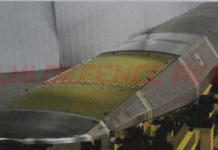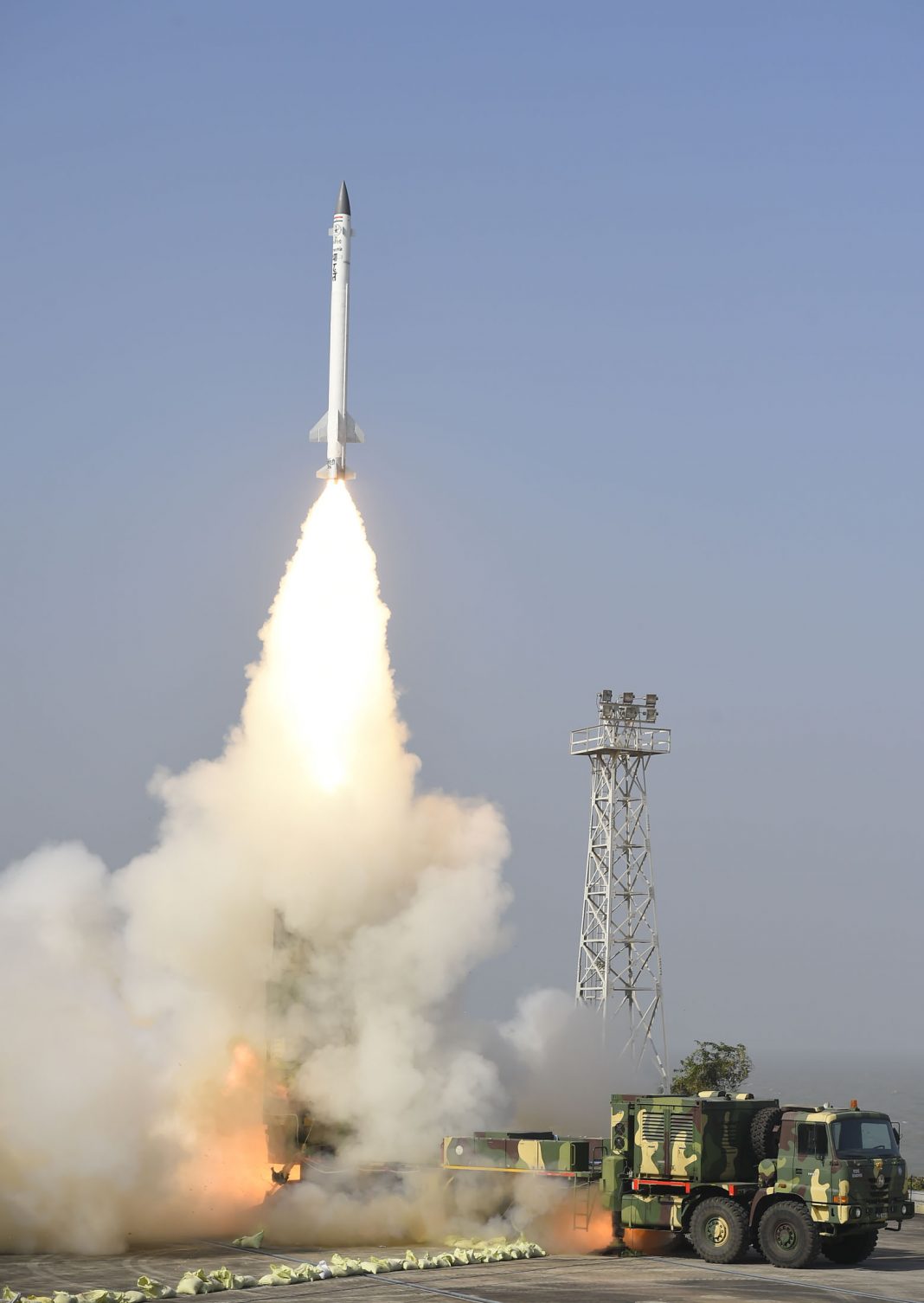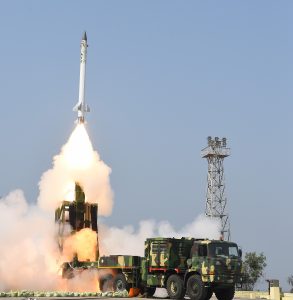India’s Defence Research and Development Organization (DRDO) successfully executed an intercept test mission earlier today at 1130 hrs from Abdul Kalam Island off the Odisha coast. This test involved the use of the DRDO developed AAD endo-atmospheric interceptor against multiple simulated incoming targets which mimicked the trajectory of a medium range ballistic missile (MRBM) launched from 1500 km away. The AAD configuration for this test was similar to what would be offered for production and deployment.
The Test
Today’s intercept mission involved the selection of one of the multiple incoming targets on a ‘real-time’ basis for interception by an AAD test-vehicle and this was executed successfully by the launched interceptor as confirmed by electro-optical tracking, radar and telemetry.
The AAD interceptor was guided by its on-board inertial navigation system (INS) which received continuous updates about the incoming target’s trajectory from ground-based radars through a secure data link.
India’s Defence Minister, Nirmala Sitharaman congratulated DRDO’s Scientist for this successful test-mission. Interestingly, Chief of Air Staff, Indian Air force, Air Marshal B.S Dhanoa witnessed this test, which might be indicative of the AAD system being near deployment.
About AAD
Image: An AAD interceptor takes off from a canisterised launcher
AAD is a single-stage missile powered by solid propellants delivering high specific impulse values. The missile has a length of 7.32 metres, diameter of 420 mm and a weight of 1275 kg. Its guidance package has a fibre optic gyroscope (FOG) at the heart of an INS which receives updates from ground based radars such as the Long Range Tracking Radar (LRTR) and the Multi-function Fire Control Radar (MFCR). Both of these radars were initially developed by DRDO’s Electronics and Radar Development Establishment (LRDE), Bengaluru with foreign collaboration. For the end-game, AAD uses a RF seeker with considerable tracking range. AAD can intercept targets at altitudes between 15 to 25 km. In the course of flight, AAD achieves high supersonic speeds and the efficacy of its thermal protection systems as well that of its actuation system has been demonstrated repeatedly.
The version of the LRTR used in today’s AAD mission is an L-band array that can track a ballistic target with a radar cross section (RCS) of 0.1 sqm from over 1500 km away. MFCR, which is a S-band array has a tracking range of over 370 km for a target with a RCS of 0.3 sqm. Both radars are capable of variable track rates.
The ground based launch control elements for AAD are the same as that for PDV.
The Mobile Launcher
Today’s test was conducted from a mobile launcher that can house a total of 6 AAD interceptors in canisterized configuration (see the video below). The launcher has been built by Tata Power SED and can also be used to launch the Prahar short range surface to surface missile which has air frame commonality with AAD. Overall, today’s AAD was tested in what is essentially going to be its deployed system configuration. (Although, only one canister was loaded onto the launcher frame for today’s test.)
All photos courtesy DRDO
© Delhi Defence Review. Reproducing this content in full without permission is prohibited.

































